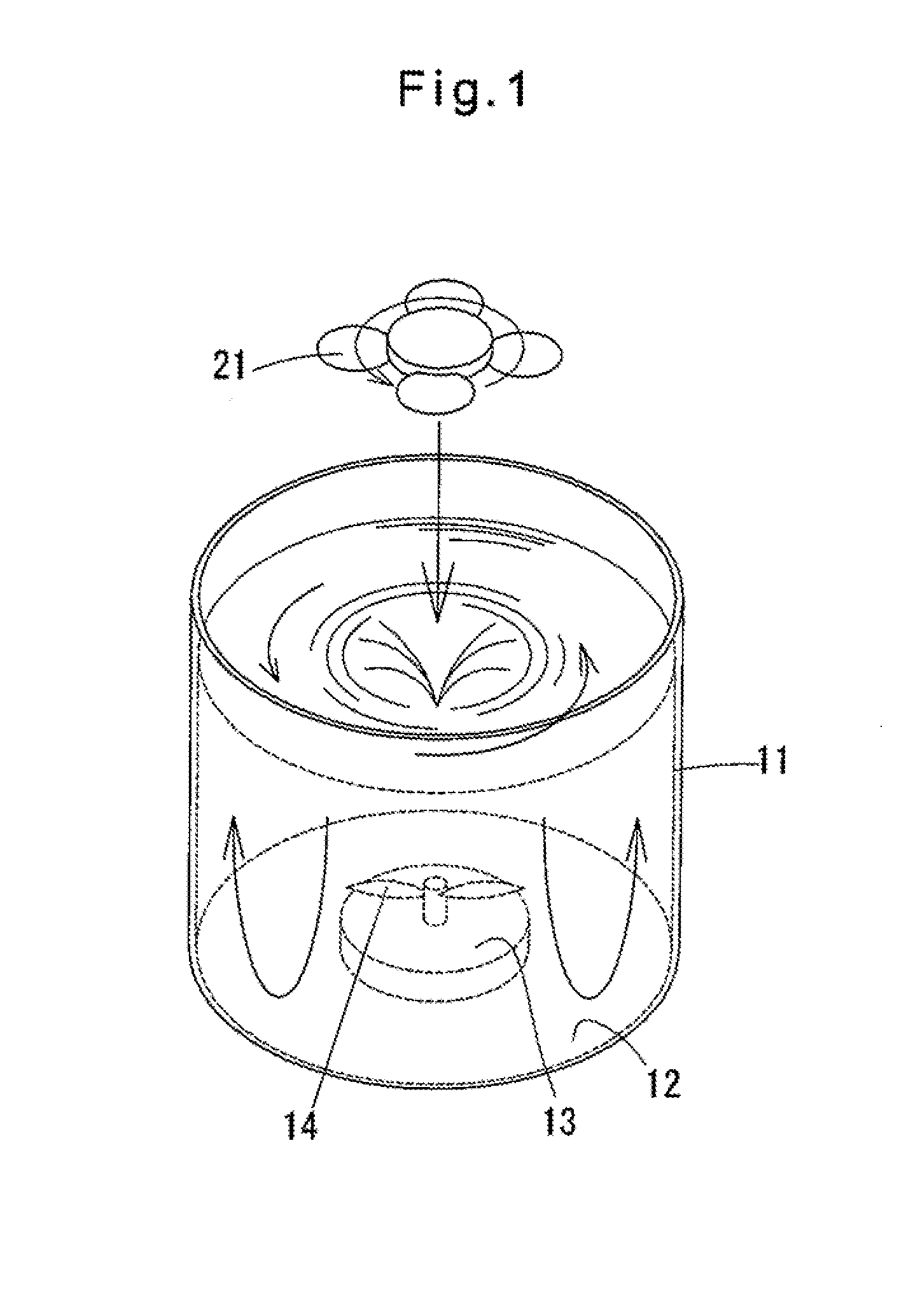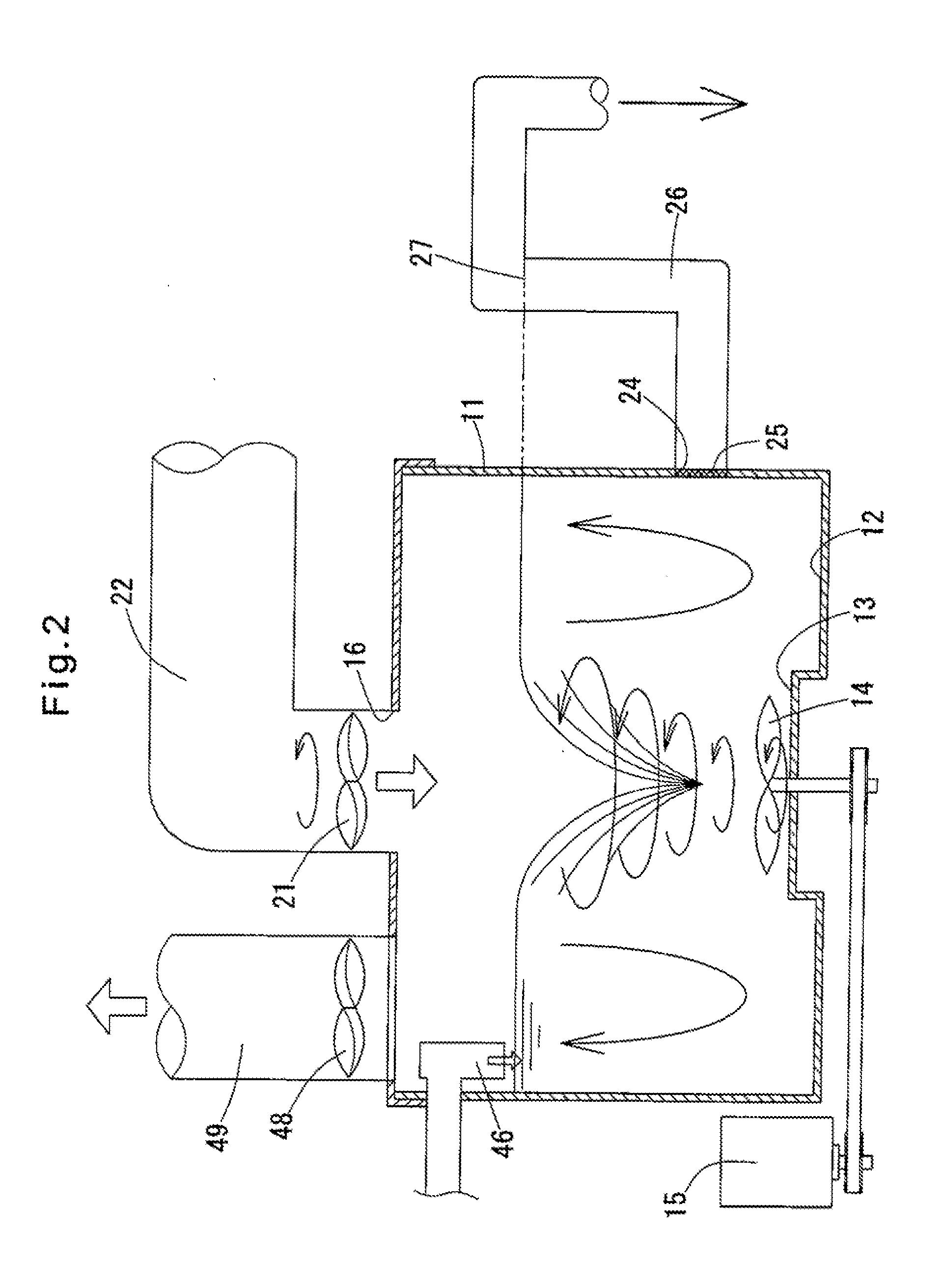Microbial decomposition treatment device and organic substance treatment unit
a treatment device and organic substance technology, applied in the field of treatment devices, can solve the problems of large installation space, insufficient efficiency of organic substance decomposition, waste of water resources, etc., and achieve the effects of high efficiency, compact size, and high efficiency
- Summary
- Abstract
- Description
- Claims
- Application Information
AI Technical Summary
Benefits of technology
Problems solved by technology
Method used
Image
Examples
example 1
[0054]Example 1 includes a cylindrical treatment tank formed of an aluminum sheet and measuring 60 cm high, and 25 cm in the bottom surface diameter (internal volume is about 120 liters), a motor, 15 cm in diameter and 5 cm high, mounted on the center of the bottom of the treatment tank, and an agitating vane unit comprising four vanes in the form of curved plates (7 cm long; each formed by diametrically cutting a pipe of 16 mm in diameter; and fixed in position so as to be angularly equidistantly spaced from each other). The agitating vane unit is rotated counterclockwise at 500 rpm (with 100 liter of water kept in the tank). The experiment was conducted indoors in Mie Prefecture, Japan. Neither a fan nor an exhaust duct was used, with the top of the tank open.
[0055]100 liter of a mixture of water and the following material was put in the treatment tank so that the mixture has a pH of 7.80, an oxidation-reduction potential (ORP) of 80 mV, and a concentration of 10000 ppm. The above...
example 2
[0058]During the above-described long-term test of Example 1, smell from the treatment tank was checked on one day of day in July 2010, after day 2 and 30 minutes after putting the test material. No smell was felt at all.
PUM
 Login to View More
Login to View More Abstract
Description
Claims
Application Information
 Login to View More
Login to View More - R&D
- Intellectual Property
- Life Sciences
- Materials
- Tech Scout
- Unparalleled Data Quality
- Higher Quality Content
- 60% Fewer Hallucinations
Browse by: Latest US Patents, China's latest patents, Technical Efficacy Thesaurus, Application Domain, Technology Topic, Popular Technical Reports.
© 2025 PatSnap. All rights reserved.Legal|Privacy policy|Modern Slavery Act Transparency Statement|Sitemap|About US| Contact US: help@patsnap.com



